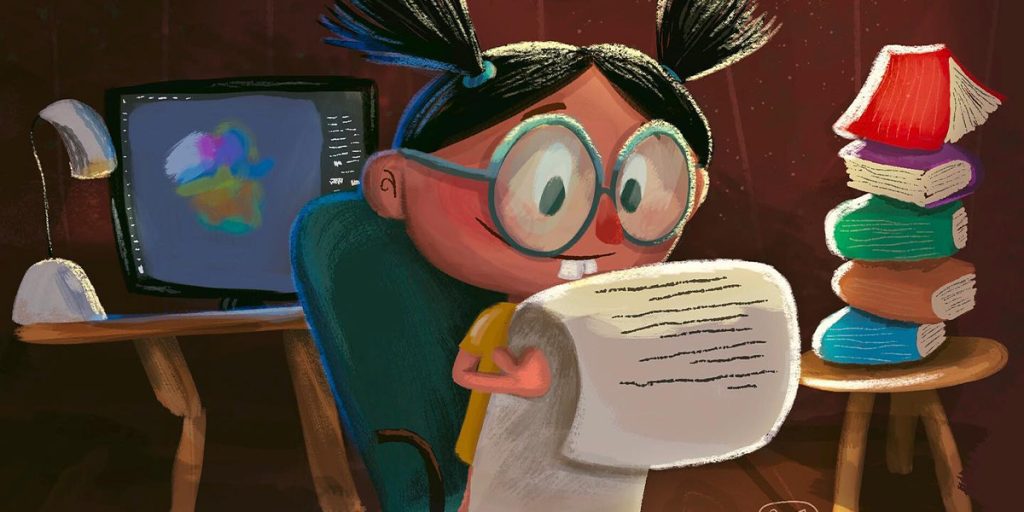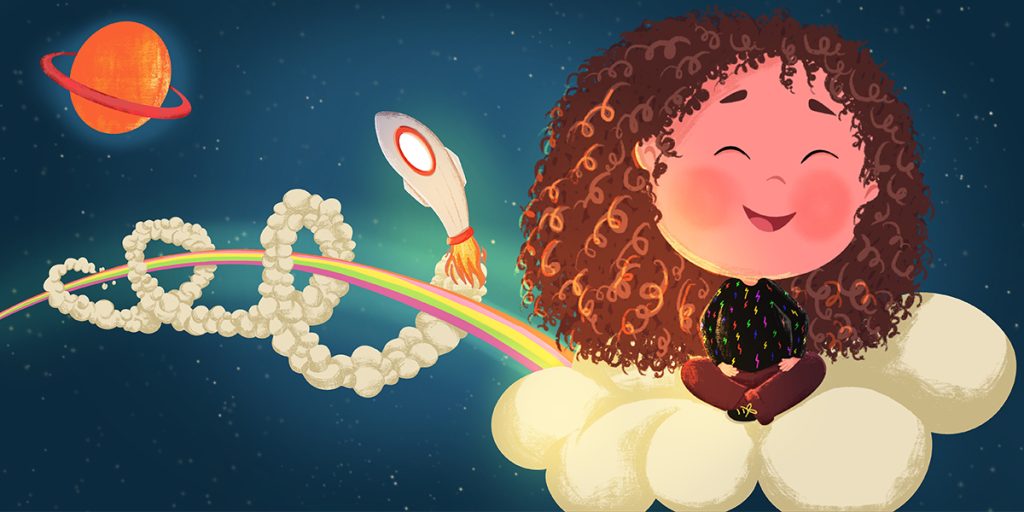In children’s literature, pictures do more than decorate pages they define the story. For young readers, illustrations are the first language of storytelling. They express emotions, hint at personalities, and bring characters to life in ways words alone cannot.
Whether it’s a mischievous grin, a bright color palette, or a curious posture, every artistic detail contributes to a character’s identity. This is where illustrations enhance character personality turning imagination into a visual experience that children can feel, remember, and love.
The Power of Visual Storytelling
Children see stories before they read them. In illustrations in children’s books, visuals guide emotions, hint at motives, and reveal relationships long before text does.
A single illustration can communicate who a character is—brave, shy, mischievous, or kind. The sparkle in the eyes, the tilt of the head, or the curl of a smile—all tell readers what kind of personality lives within that page.
For example, think of The Gruffalo, The Little Prince, or Where the Wild Things Are. The illustrations don’t just show characters—they shape how we feel about them. That’s the magic of visual storytelling for kids: it builds emotion without needing words.
2. Character Design: The Foundation of Personality
A well-designed character is more than cute it’s consistent, expressive, and full of personality.
In character personality in illustration, design choices such as shape, size, and texture influence how readers perceive a character.
- Round shapes suggest friendliness and approachability (think of Winnie the Pooh).
- Angular designs give energy and mischief (like the Cat in the Hat).
- Soft lines convey warmth and kindness.
- Sharp lines may represent conflict or power.
Children form instant emotional impressions from these shapes, long before they grasp a single sentence. That’s why illustrators carefully choose proportions and silhouettes to express each character’s personality visually.
Facial Expressions: The Heartbeat of Emotion
A character’s face is the most powerful storytelling tool an illustrator has. Expressions help children understand what the character feels—and by extension, how they should feel too.
When illustrating for young audiences, emotions need to be clear and exaggerated. A slightly wider smile, larger eyes, or teardrops can make feelings instantly recognizable.
For example:
- Raised eyebrows can express curiosity.
- Downturned eyes show sadness or fear.
- An open mouth paired with bright eyes suggests joy or surprise.
In children’s book illustration techniques, creating expressive characters bridges the emotional gap between story and reader. Children don’t just see the character’s emotions they feel them.
Also Read:Top 10 Mistakes to Avoid in Character Development
Body Language: The Silent Storyteller
A great illustration doesn’t stop at the face—it tells stories through movement and gesture. Body language in illustration adds layers to a character’s personality.
A confident hero may stand tall with open arms, while a timid child might clutch their backpack or hide behind a friend. These physical cues communicate identity, mood, and growth without a single line of dialogue.
Illustrators often use posture changes to show development across a story. For example, a shy bunny who starts crouched low might end the book standing upright, showing courage and growth.
In this way, illustration becomes an evolving visual arc—a storytelling journey through posture, not paragraphs.
5. The Role of Color in Shaping Personality
Colors speak directly to emotion, especially for children. In children book illustrations, color palettes define tone, mood, and even personality traits.
- Warm colors (yellow, red, orange) evoke excitement, friendliness, and happiness.
- Cool colors (blue, green, purple) suggest calmness, imagination, or mystery.
- Soft pastels work well in gentle bedtime stories.
- Bold, saturated tones fit adventurous or humorous tales.
Color psychology plays a vital role in character development in children’s stories. For example, a cheerful protagonist might always be surrounded by sunny yellows, while a mysterious forest creature may be cloaked in dark greens and purples.
When illustrators keep their color themes consistent, readers instantly recognize each character’s “emotional signature.”
6. Props and Environments Add Depth
Sometimes, what surrounds a character says as much as the character itself. A well-chosen prop—like a magical wand, a sketchbook, or a stuffed toy—adds insight into personality.
Similarly, environments reinforce traits. A curious explorer might live among maps and books, while a shy fairy may hide within glowing flowers.
In storytelling through art, props and backgrounds help define the world a character belongs to, making their personality feel grounded and believable.
7. Consistency Across Pages Builds Recognition
For young readers, consistency builds trust and familiarity. A character’s appearance, proportions, and expressions should remain consistent across every page.
This visual stability helps children identify and emotionally bond with the character. It also enhances storytelling flow—so that even when the setting or mood changes, the reader never loses track of who the story is about.
That’s why illustrators use character sheets visual blueprints that ensure design, colors, and gestures remain unified throughout the project.
8. Illustration Brings the Writer’s Words to Life
Children’s books thrive when words and art work hand in hand. The author’s words introduce personality traits; the illustrator’s art proves them.
For example, if the text describes a brave little fox, the illustration might show him facing a storm or climbing a tall tree. This harmony between description and imagery makes the personality real.
In modern publishing, collaboration between writers and illustrators is essential for crafting character personality in illustration that feels authentic and emotionally rich.
Conclusion – Where Imagination Becomes Personality
Illustrations do far more than support a story—they define it. Through expression, color, and movement, illustrators breathe soul into characters that words alone could never capture.
In children books, strong visuals help readers understand feelings, build empathy, and remember the story for years to come. Each brushstroke shapes personality, each color adds emotion, and each pose tells a story of its own.
At The Rainbow Stories, we believe every illustration is a heartbeat of imagination. Our artists specialize in illustrations for children books that give characters personality, warmth, and life turning sketches into unforgettable storytelling experiences.







